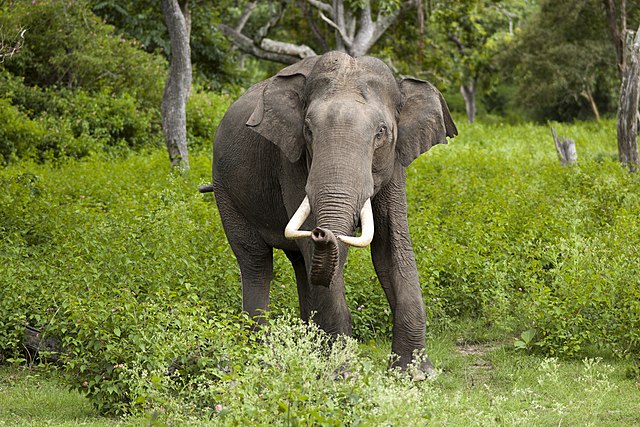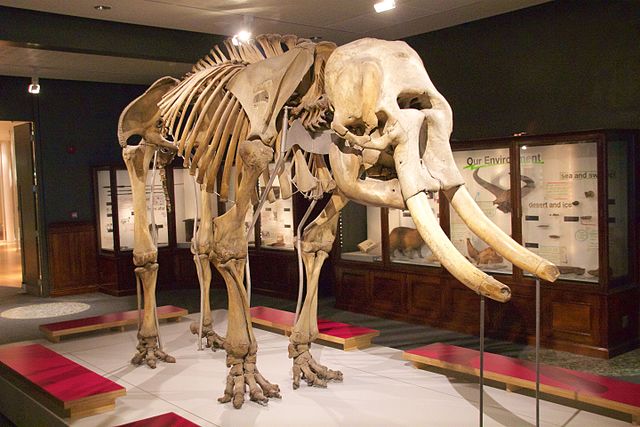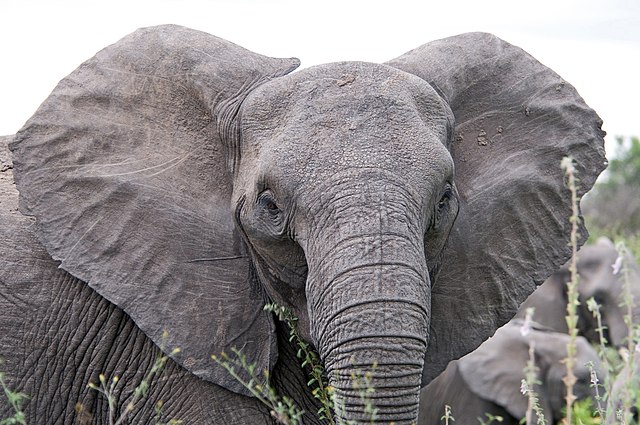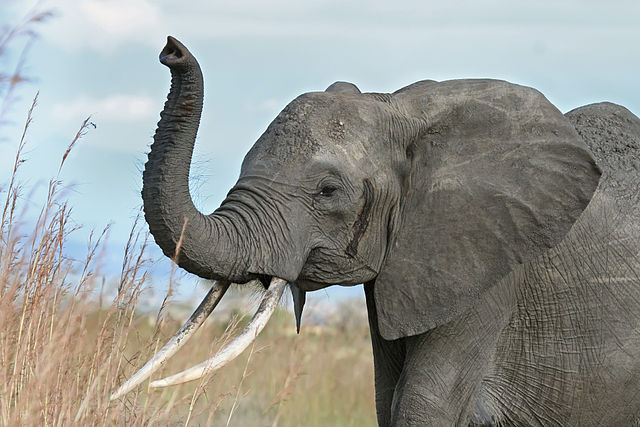The Asian elephant, also known as the Asiatic elephant, is a species of elephant distributed throughout the Indian subcontinent and Southeast Asia, from India in the west, Nepal in the north, Sumatra in the south, and to Borneo in the east. Three subspecies are recognised—E. m. maximus, E. m. indicus and E. m. sumatranus. The Asian elephant is characterised by its long trunk with a single finger-like processing; large tusks in males; small ears folded laterally in contrast to African elephants; and wrinkled grey skin. The skin is smoother than African elephants and may be depigmented on the trunk, ears or neck. Adult males average 4 t in weight, and females 2.7 t.
Image: Elephas maximus (Bandipur)
Image: Sri Lankan elephant (Elephas maximus maximus) female and young 1
Young adult male Asian elephant skeleton compared to a human
Skeleton of a male Asian elephant
Elephants are the largest living land animals. Three living species are currently recognised: the African bush elephant, the African forest elephant, and the Asian elephant. They are the only surviving members of the family Elephantidae and the order Proboscidea; extinct relatives include mammoths and mastodons. Distinctive features of elephants include a long proboscis called a trunk, tusks, large ear flaps, pillar-like legs, and tough but sensitive grey skin. The trunk is prehensile, bringing food and water to the mouth and grasping objects. Tusks, which are derived from the incisor teeth, serve both as weapons and as tools for moving objects and digging. The large ear flaps assist in maintaining a constant body temperature as well as in communication. African elephants have larger ears and concave backs, whereas Asian elephants have smaller ears and convex or level backs.
Elephant
African bush elephant skeleton
African bush elephant with ears spread in a threat or attentive position; note the visible blood vessels
African bush elephant with its trunk raised, a behaviour often adopted when trumpeting








